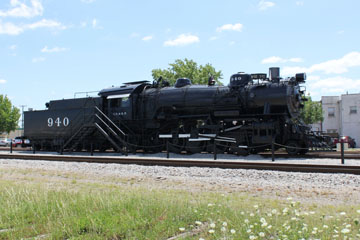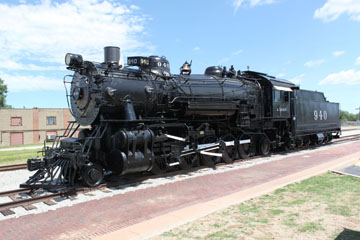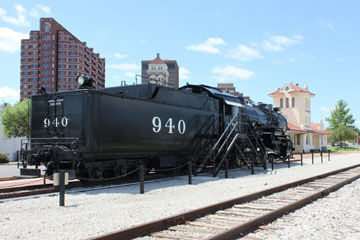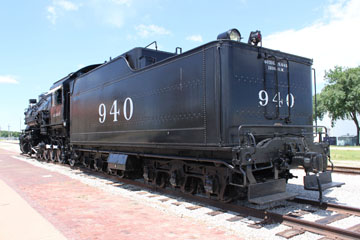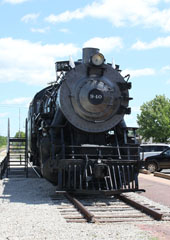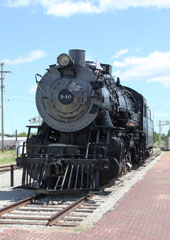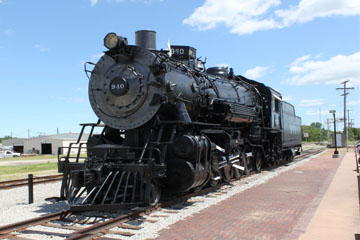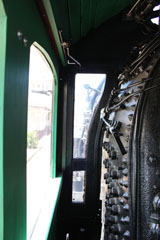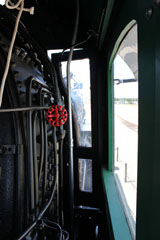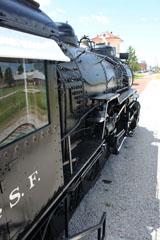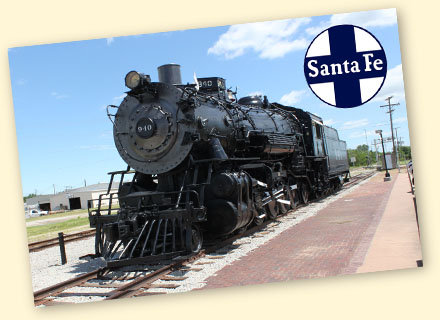

Ironically, because the AT&SF gave the type its name, #940 is the sole surviving Santa Fe (2-10-2) type locomotives rostered by the railroad, and one of only seven US built
2-10-2s to have been preserved. You can see more of the type on this website: DMIR E #502 on the National Museum of Transportation, St. Louis Yard page, DMIR E1 #506 on the National Railroad Museum page and TNO F-1 #976 on the Illinois Railway Museum Yard page.
In 1902, the AT&SF had bought a pair of Decapod
(2-10-0) type locomotives to use as pushers on Raton Pass in New Mexico. After ascending the grade, however, there was no facility to turn them so they had to back down, and their long, rigid wheelbase meant they had difficulty with the tight curves on the twisting line. In 1903, the AT&SF consequently asked Baldwin to build a number of Decapods with a pair of trailing wheels that would help guide the drivers when the locomotives were running in reverse. The trailing truck also allowed a deeper and wider firebox set behind the rear driving wheels instead of between them as was the case for the 2-10-0.
The new wheel arrangement was therefore named "Santa Fe" after the railroad that first used it.
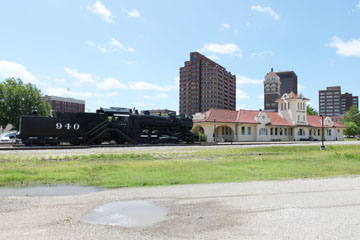
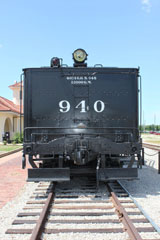
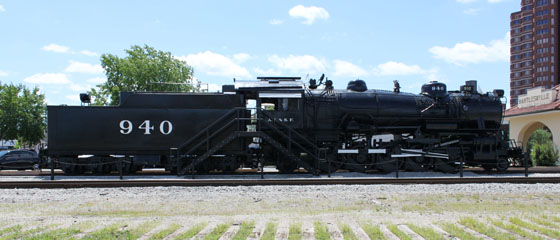
#940 is on display at the Union Depot on 2nd Ave in Bartlesville, OK. From 1949 to 1952, it regularly travelled through the city on trips between Tulsa and Chanute, OK. Retired in 1954, it was donated to Bartlesville in 1956.
It was one of the first eighty-six Santa Fes built for the AT&SF by Baldwin from 1903 to 1904 (#900-#985). In all, the railroad would eventually roster three hundred and fifty-two of the type, the largest number of any US railroad (a total of two thousand, one hundred and seventy-nine were rostered by forty-four US railroads).
Built as tandem compounds, the 900s had a
19" x 32" high pressure and 32" x 32" low pressure cylinder lined up one behind the other, the high pressure cylinder in front.
The main advantage claimed for compounding was lower fuel and water consumption, but complex designs such as the tandem compound increased maintenance costs and largely offset any fuel economies. By the turn of the century, many US railroads were turning away from compounds and converting those they already owned to single-expansion locomotives.
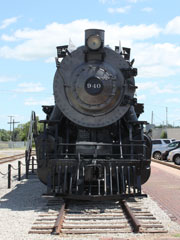
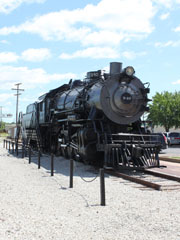
The AT&SF simpled its 900s between 1916 and 1923 with 28" x 32" cylinders, #940 in 1919.
The conversion simply involved removing the front high pressure cylinders, shortened the piston rod and bushing the low pressure cylinders to the required new diameter of 28".
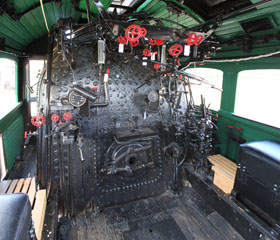
At the same time, the 900s were superheated and fitted with two arch tubes that added 13.95 sq ft to the firebox heating surface. The changes increased the locomotive's weight by 25,699 lbs to 302,490 lbs, 251,250 lbs on the 57" drivers.
Walschaert valve gear replaced the Stephenson gear, which had been better suited to tandem compounding, and the boiler pressure was dropped from 225 psi to 200 psi. With a 58.5 sq ft grate and 222.95 sq ft firebox, the locomotive had a total heating surface of 5,063 sq ft, including 1,008 sq ft superheating. The changes created a relatively uncomplicated workhorse, increasing the locomotive's tractive effort by 30% from 57,314 lbs to 74,824 lbs.
Built as coal burner, #940 was later converted to burn oil. The tender weighs 110,550 lbs and has a capacity for 12,000 gallons of water and 4,031 gallons of oil.


